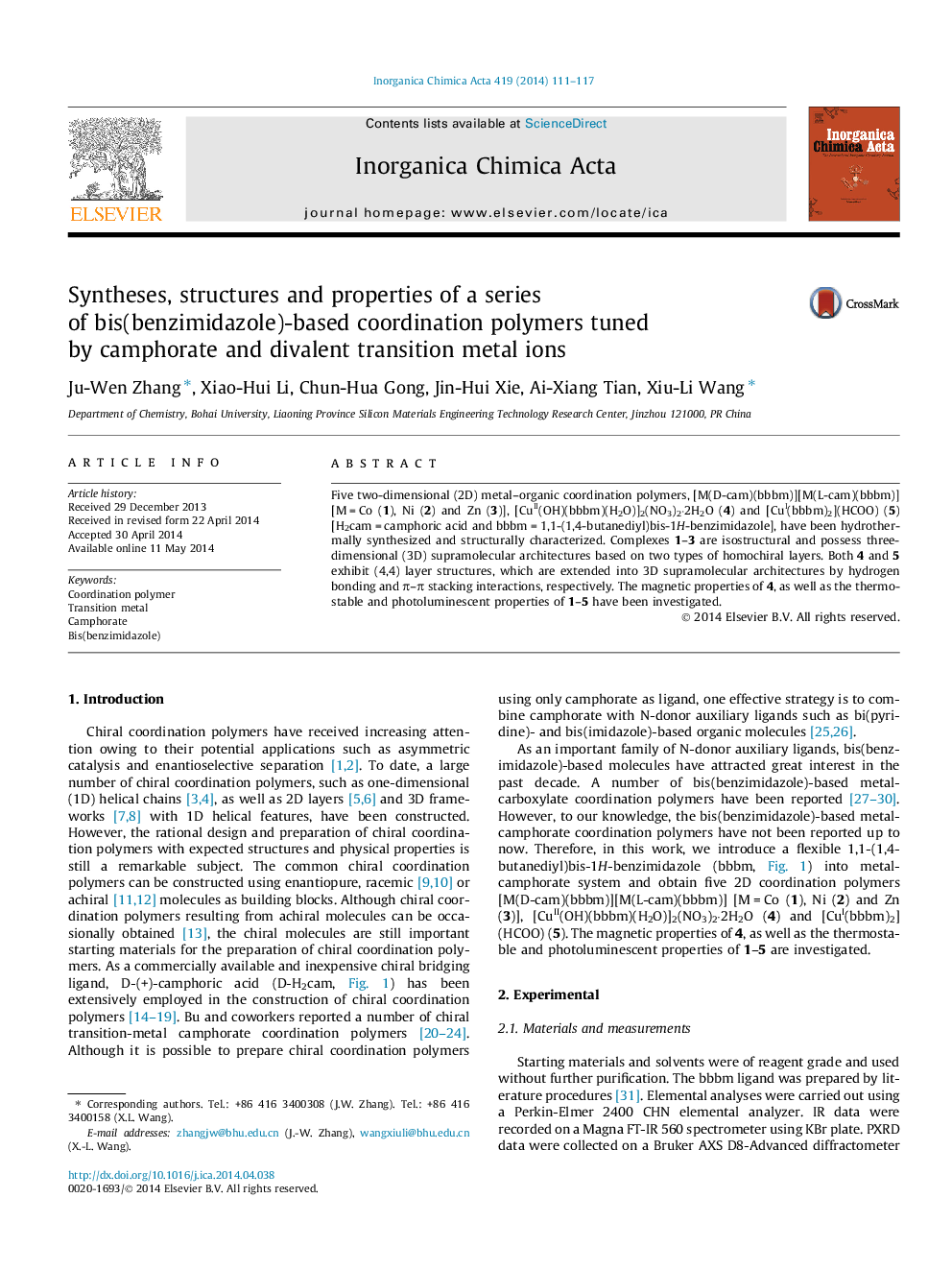| Article ID | Journal | Published Year | Pages | File Type |
|---|---|---|---|---|
| 1309611 | Inorganica Chimica Acta | 2014 | 7 Pages |
•Five 2D bbbm-based transition-metal coordination polymers are obtained.•The racemization of D-(+)-camphoric acid and the reduction of CuII are observed in the preparation of five polymers.•The magnetic, thermostable and photoluminescent properties of five polymers are investigated.
Five two-dimensional (2D) metal–organic coordination polymers, [M(D-cam)(bbbm)][M(L-cam)(bbbm)] [M = Co (1), Ni (2) and Zn (3)], [CuII(OH)(bbbm)(H2O)]2(NO3)2·2H2O (4) and [CuI(bbbm)2](HCOO) (5) [H2cam = camphoric acid and bbbm = 1,1-(1,4-butanediyl)bis-1H-benzimidazole], have been hydrothermally synthesized and structurally characterized. Complexes 1–3 are isostructural and possess three-dimensional (3D) supramolecular architectures based on two types of homochiral layers. Both 4 and 5 exhibit (4,4) layer structures, which are extended into 3D supramolecular architectures by hydrogen bonding and π–π stacking interactions, respectively. The magnetic properties of 4, as well as the thermostable and photoluminescent properties of 1–5 have been investigated.
Graphical abstractFive 2D bbbm-based transition-metal coordination polymers are synthesized. Racemization of D-(+)-camphoric acid and reduction of CuII are observed. Magnetic, thermostable and photoluminescent properties are investigated.Figure optionsDownload full-size imageDownload as PowerPoint slide
